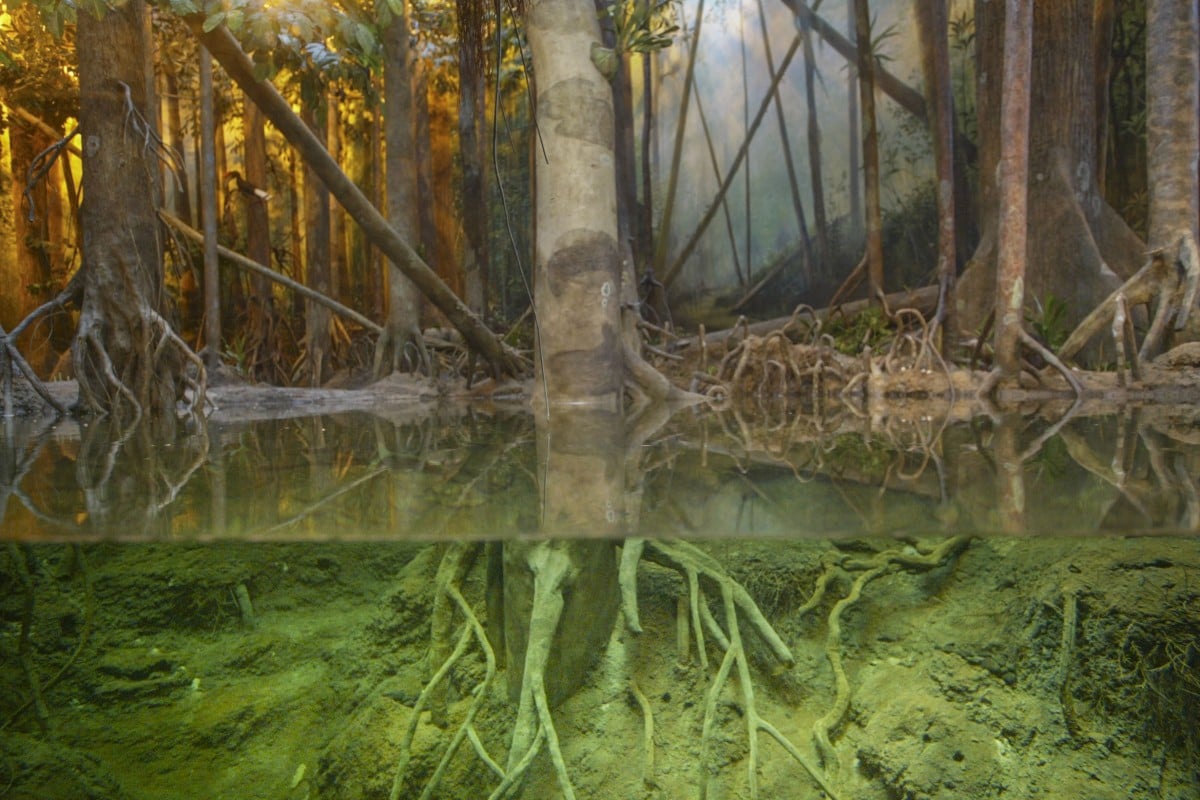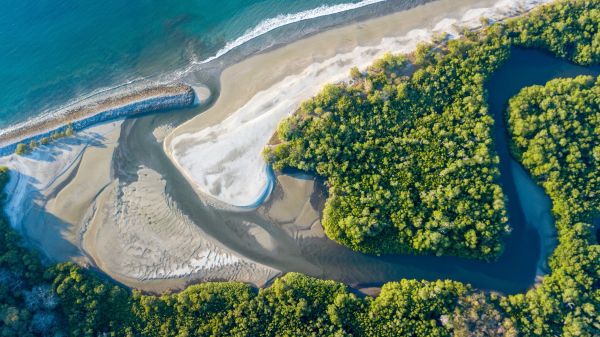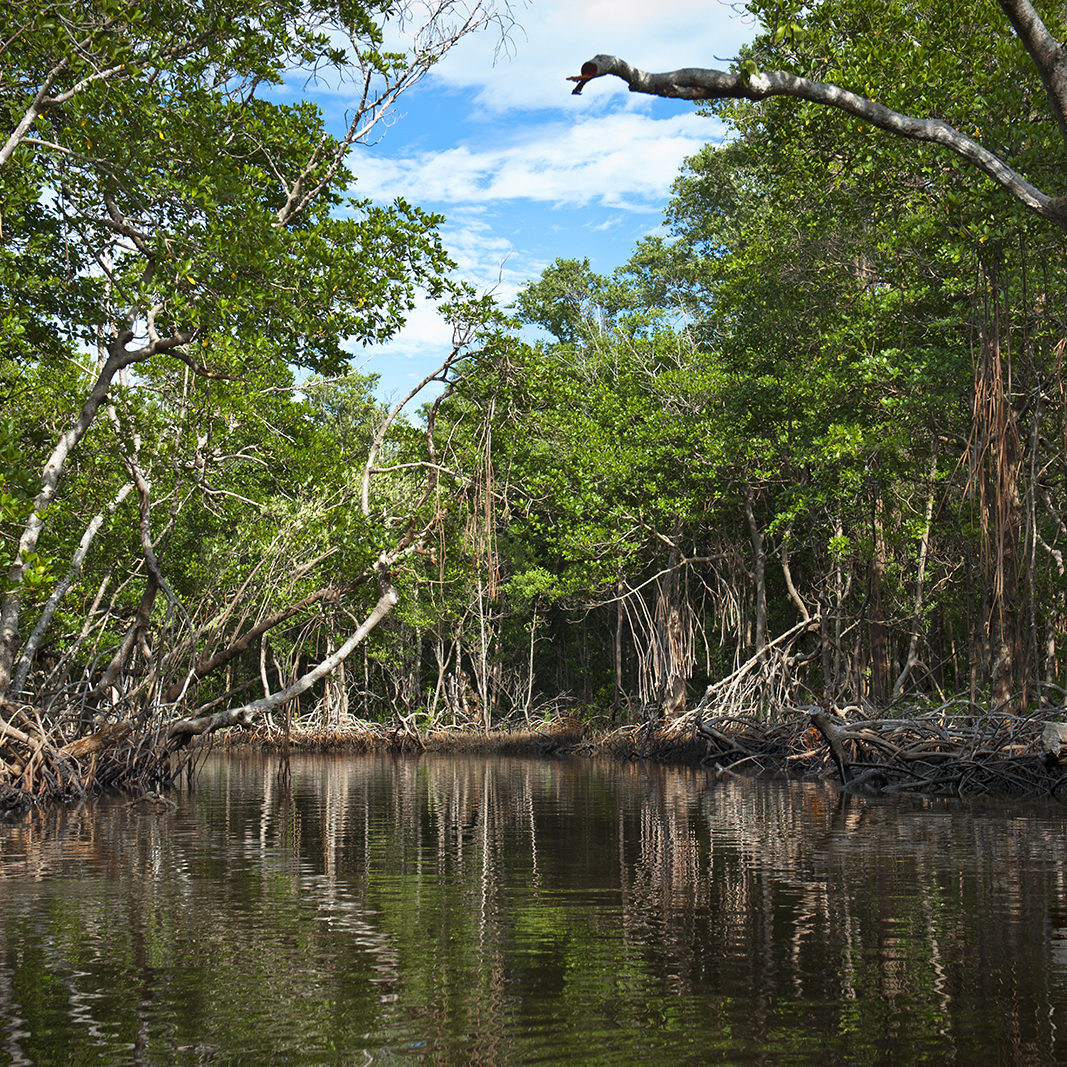Why mangroves are critical in climate change fight, and how Indonesia and Tanzania are using eco-tourism to protect them |
TANZANIA – On the coast of Tanzania’s Mafia Island is a blue lagoon – a dreamlike pool of bright turquoise water, filtered and cooled by the mangroves that surround it. Ailars David, a marine conservation warden at the reserve, says there is a plan to build a boardwalk for tourists to reach the lagoon so they can swim surrounded by nature and the freshest of air. “When you look up, you only see trees and the sounds of birds,” David said on Nature, Land Use and Ocean Day,Nature Day”, at the Cop28 UN climate summit in Dubai. David hopes this nascent eco-tourism project can help fund work to patrol the Marine Protected Area’s more than 5,000 hectares (12,355 acres) of mangrove forest. Mangroves act as carbon sinks, absorbing large quantities of planet-heating carbon dioxide, as well as offering benefits from protecting biodiversity and purifying water to protecting coastlines from erosion as sea levels rise on a warming planet. |
| Legal and Policy Recommendations to Support International Mangrove Targets |
GLOBAL – Mangroves and other coastal ecosystems are gaining attention in the international agenda, including as part of the UNFCCC COP28 presidency priorities, where a coalition of parties and non-state actors are building momentum to direct increased action for mangroves in support of the Mangrove Breakthrough. As of 2023, 97 countries have included coastal and marine ecosystems, including mangroves, in their Nationally Determined Contributions (NDCs) to the Paris Agreement, and 61 countries have included conservation or restoration of blue carbon ecosystems as mitigation and/or adaptation measures. Mangroves are highly relevant to the implementation of multiple goals and targets across the Kunming-Montreal Global Biodiversity Framework (GBF) (Targets 1, 2, 3, 8, for instance), and Parties are expected to update their National Biodiversity Strategy and Adaptation Plans to align with the GBF goals by COP16 in 2024. Globally, 305 Ramsar sites contain mangrove ecosystems, and Parties under the Ramsar Convention are to pursue policies and regional initiatives to conserve and restoral coastal wetlands, including mangroves. |
|












